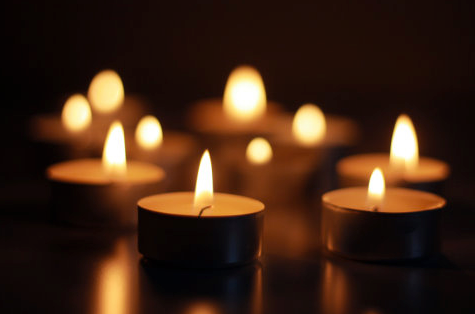Ari (Ballaban) Jun — In Conversation

Holocaust victims’ stories must live on
Last week, I received an email from a grandchild of a Holocaust survivor who wanted to let me know about her family’s remarkable discovery. More than 70 years ago her grandfather’s brother, Chaim, escaped a Polish ghetto south of Warsaw through crack in a wall. Since liberation, in 1945, Abram searched for his brother and despite not having leads, he remained hopeful. Through the family’s perseverance, the children and grandchildren learned two weeks ago that Chaim had survived in the Soviet Union and that his family was still living there. So, as preparations were under way for Passover, the descendants of these brothers reunited via Skype. Unfortunately, neither brother lived to see the reunion.
As the granddaughter of Holocaust survivors and the director of Cincinnati’s Center for Holocaust and Humanity Education, this remarkable story had a special meaning for me. It’s a reminder that the Holocaust isn’t just history, it is living memory with continued impact.
While we hear many stories about what we call the Shoah and sometimes find ourselves fatigued by the history, our Jewish tradition teaches us to tell and retell these stories. It is important to go beyond remembering the horror of concentration camps like Auschwitz or Buchenwald, to remember the lives 6 million Jews left behind, the richness of the Jewish experience that existed at that time in Europe, and to restore the humanity the Nazis tried to destroy. This is more than a litany of dates, events and names. It is the stories of their lives, experiences and relationships that we must allow to touch us.
This time of year offers us all an opportunity to remember and reflect on this history. A week after the Passover holiday closes is Yom HaShoah, or the Day of Holocaust Remembrance. It falls on Thursday this year.
For me, this time is virtually impossible to describe. On one hand, my colleagues and I are busy planning community commemorations for survivors and their descendants and on the other hand, on a personal level, it is a time for reflection and introspection.
This year our community listened to the words of Sarah Wildman, a journalist and the grandchild of Holocaust survivors. Sarah traced her personal journey to uncover stories lost in the Holocaust. In her book Paper Love, she not only illuminates their lives, but also offers a glimpse into the challenges we face as children born two generations after the Holocaust.
“We were shaped by the stories our grandparents had told us or not told, deeply affected by them and yet distanced, unable to figure out how to translate them for our own children and the children yet to come, unable, in some ways, to decide how to talk about this history once the eyewitnesses were gone. The stories were tactile and yet dusty, faded; they were real, and yet totally unfathomable. And if they felt this way to us, what would they feel like to those who came after? We are the last to know and love survivors as who they are – as human, as flawed, as our family. What, now, do we do with that knowledge?”
In addition to remembering, we must also keep searching. While many of us have read stories about the Holocaust, watched movies or even heard survivors speak, I remind you that we are still missing the names and stories of 2 million victims. We must speak the names of those we know and seek the names and stories of those we don’t. We do this with an urgency, knowing that the window of time is closing.
Longtime Cincinnati resident and Holocaust survivor Anna Ornstein has shared the importance of telling her stories because, as she puts it, “I fear that if I stop writing, stop building the memorial, my children and everyone who reads these stories will stop remembering the people we have lost–and those who are forgotten are truly dead.”
I accept the mission to keep remembering, writing and educating about the Holocaust. I hope you will, too. Learn more about Holocaust remembrance programming at www.holocaustandhumanity.org.
This story was first published at Cincinnati.com on May 4, 2016.

